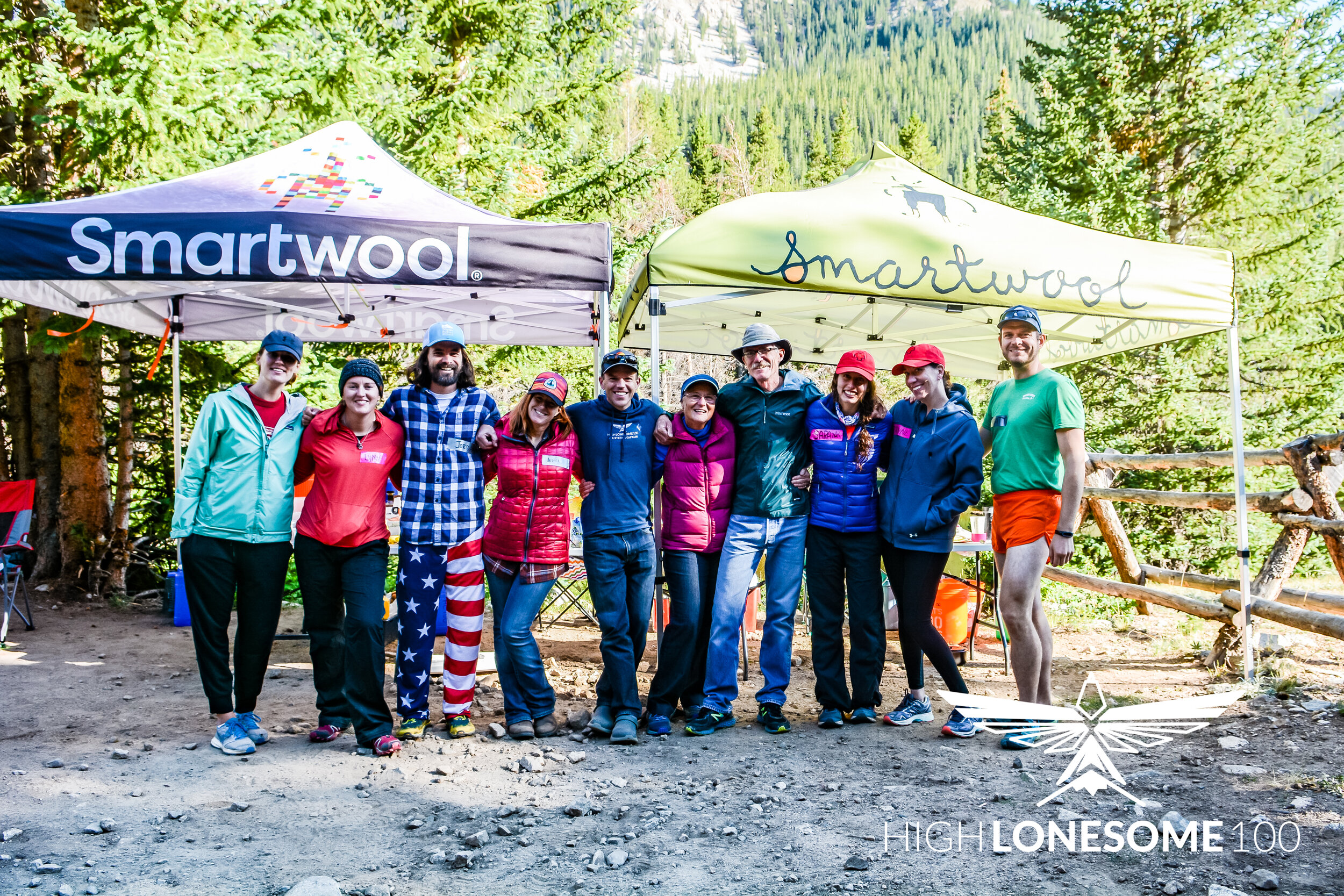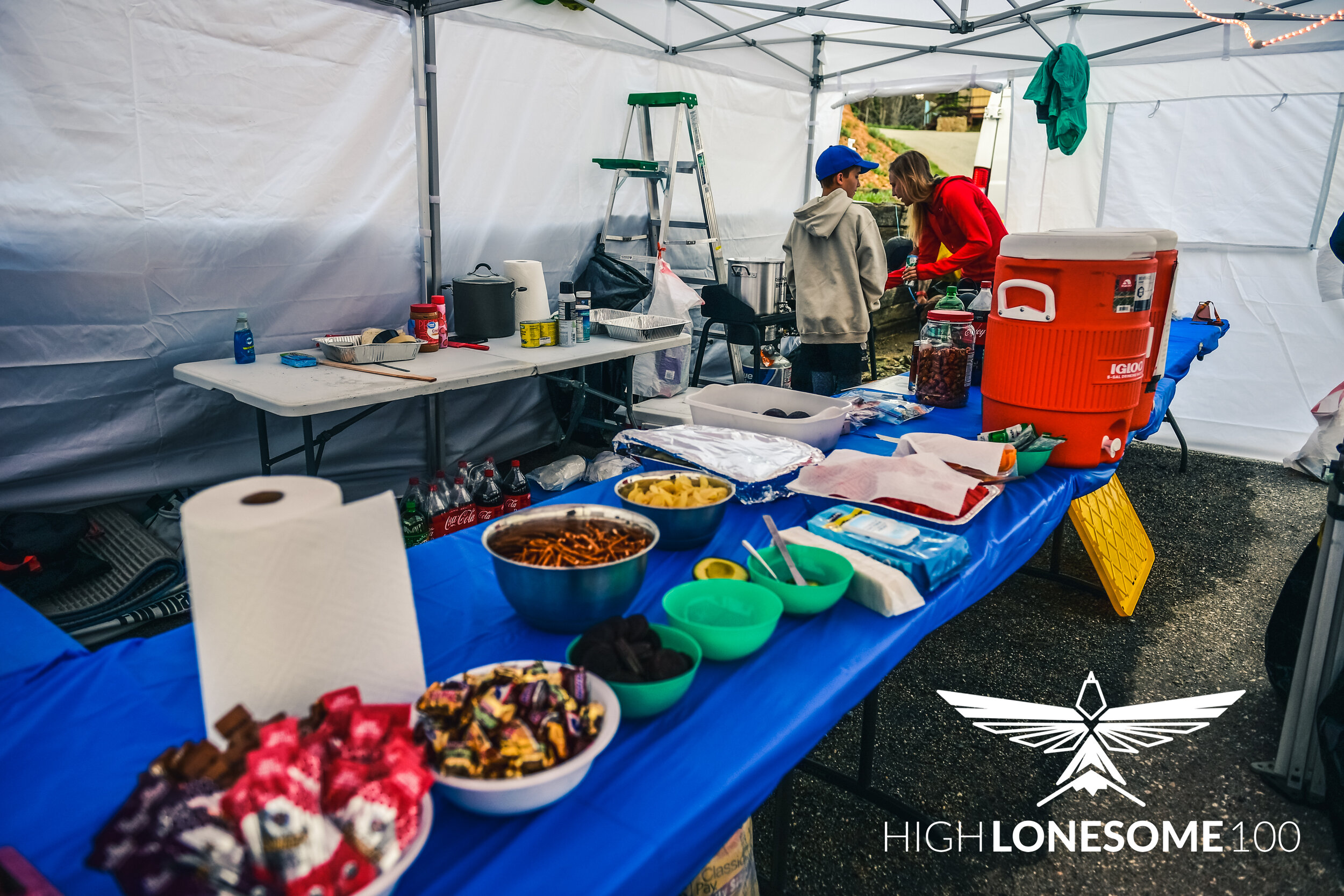Putting on a 100 miler takes A LOT of help!
The High Lonesome is only successful because of the MASSIVE amount of support we receive from our wonderful community of volunteers! We have roughly 300 volunteers shifts across our 4 teams: General, Communications, Medical, and Course Marking/Sweeping.
How do you sign up to volunteer?
Read through the description of the teams to decide which ones you are interested in
Click on the links below for your desired team
Select as many shifts as you’d like (you have to do this one at a time!), just make sure you have time for driving, eating, and sleeping!
Your team leader, director, or captain will reach out in the following months with more info
Hoping to boost your odds in the High Lonesome lottery? Each shift is worth a certain number of points which you can use to win an entry into the race or to boost your odds in the lottery! Scroll down to see the chart with values for all the shifts.
On the second Tuesday after the race, we do our volunteer bypass raffle at the Golden Mountain Runners’ group run. All volunteers get the number of tickets for the number of shifts they worked and it’s a great way to get into the race early! The event will be streamed on social media for those that can’t join in person.
GENERAL VOLUNTEER
Our biggest team, the general volunteers carry the brunt of the race. From prepping supplies and checking runners in, to helping runners at aid stations and cleaning up after the race. This team does it ALL and has something for everyone, including kids! While not required, many aid stations spend the whole weekend camping together (because we just don’t want the good times to end) and it’s not uncommon for volunteers to work at multiple aid stations. We even get runners and pacers helping out before and after the race (every little bit helps)! If you’re interested in working multiple shifts, you can reference the chart below to see the drive times between the aid stations AND what kind of vehicle you’ll need to get to each.
COMMS TEAM
Love data and numbers? This is your team! The comms team plays the incredibly important role of tracking each runner in and out of every aid station. We utilize satellite-internet hotspots and the OpenSplitTime app as our primary tracking method. Additionally, the comms team provides communication between aid stations and CommsHQ through cell phones, Garmin InReach satellite messengers, and sat phones. As a fail safe, all tracking info is also recorded with pen-and-paper. The comms team is the most informed team in the race and BONUS, they also get to post our social media updates over race weekend! If you’re interested, click the link below to sign up for an aid station or CommsHQ shifts.
MEDICAL TEAM
Are you a licensed medical professional and want to help care for runners? Join our phenomenally talented medical team! The med team is led by our two amazing medical directors - Dr’s Whitney Barrett and Janetta Iwanicki - who work tirelessly to keep our runners safe. Medical volunteers are paired together and are given fully stocked medical kits, protocols, direction, and race-specific education. Medical volunteers must be currently licensed and must have at minimum BLS certification. ACLS and EMS experience is especially valuable, but not required. Click the link below to sign up for available shifts based on your provider level!
MARKING/SWEEPING
The most active of all our teams, the course markers and sweepers are responsible for covering hundreds of miles to mark the route and sweep the course for runners, course markings, and trash. Course marking starts during the week before the race and sweeping happens in segments between aid stations. Previous course experience is a MUST for course marking and strongly desired for sweepers. While you may be given a section to mark solo, most sweeping sections have two sweepers. It’s a great way to see the course and help us make sure no runners get lost! Click the link below to sign up for the days and shifts you are able to volunteer for!


























